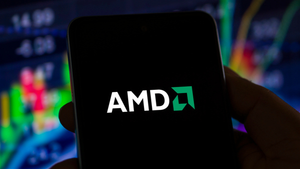
San Francisco, CA – September 29, 2025 – Robinhood Markets, Inc. (NASDAQ: HOOD), the popular commission-free trading platform, has achieved a monumental milestone, with its shares surging to an all-time high of $132.67 today. This remarkable ascent caps a year of extraordinary growth, seeing the company's stock skyrocket over 226% year-to-date, far outpacing the S&P 500's respectable 13.8% rally over the same period. The unprecedented performance has not only cemented Robinhood's position as a dominant force in the financial technology sector but has also made it the S&P 500's top performer for 2025.
The immediate implications of this surge are profound, signaling robust investor confidence in Robinhood's diversified business model and its strategic expansion into new financial services, including cryptocurrency and wealth management. The company's inclusion in the S&P 500 Index on September 22, 2025, further amplified its market visibility and triggered significant passive fund inflows. While the record valuation underscores Robinhood's growing influence, it also sparks discussions among analysts about the sustainability of its rapid growth and potential overvaluation in the near term.
Robinhood's Meteoric Ascent: A Deep Dive into the Factors Driving its All-Time High
Robinhood Markets, Inc. (NASDAQ: HOOD) has not just reached an all-time high; it has shattered previous records, with its stock touching an intraday peak of $132.03 on September 29, 2025. This historic milestone is the culmination of a strategic transformation and a confluence of favorable market conditions that have propelled the company's shares to an astonishing year-to-date surge of over 226%, and some reports even suggest a staggering 440% increase. This dramatic rise has inflated Robinhood's market capitalization to over $100 billion, a significant leap from its IPO valuation of $32 billion in July 2021.
The journey to this peak has been marked by several pivotal events and strategic maneuvers. After its initial public offering in July 2021 at $38 per share, Robinhood faced skepticism, particularly concerning its reliance on payment for order flow and regulatory scrutiny. However, 2025 has been a breakout year. Strong Q1 and Q2 earnings, reported in April and July respectively, showcased robust revenue growth—50% YoY in Q1 and 45% YoY in Q2—driven significantly by a surging cryptocurrency segment, which saw triple-digit growth for nearly six consecutive quarters. Key product expansions, including a blockchain-based platform for European investors, stock tokens in the EU, and new offerings like Robinhood Social and the AI tool Cortex, have broadened its appeal and revenue streams. A major catalyst was its inclusion in the S&P 500 Index on September 22, 2025, which immediately sent shares jumping by 16%.
Key players in this success story include CEO Vlad Tenev and co-founder Baiju Bhatt, who have steered the company through its growth and diversification strategy. CFO Jason Warnick has overseen the company's improved financial health, which now consistently reports positive net income. The millions of retail investors on the platform remain crucial stakeholders, driving engagement and asset growth. While regulators like the Securities and Exchange Commission (SEC) and FINRA continue to oversee the industry, a more favorable regulatory environment for cryptocurrencies has also acted as a tailwind for Robinhood's digital asset ventures.
Initial market reactions to Robinhood's IPO were mixed, reflecting both excitement over its disruptive model and concerns over profitability. However, the current sentiment is largely optimistic, with many analysts raising price targets. Yet, the rapid appreciation has also led some to downgrade the stock to a "hold," suggesting potential overvaluation and the possibility of a near-term correction, even while maintaining a positive long-term outlook. The driving forces behind this year's incredible surge are multifaceted: explosive cryptocurrency revenue growth, a rapidly expanding customer base with increasing assets on the platform, aggressive product innovation and diversification (including the highly successful Robinhood Gold subscription, retirement accounts, and new banking services), consistently strong financial performance, and the prestige and passive fund inflows associated with S&P 500 inclusion. The company's share buyback program and the benefit of elevated interest rates on its cash management operations have also contributed significantly to its robust performance.
Shifting Sands: Who Wins and Loses in Robinhood's Ascent
Robinhood Markets, Inc.'s (NASDAQ: HOOD) unprecedented surge to an all-time high, driven by aggressive diversification and a burgeoning user base, is reshaping the competitive landscape of the financial services industry. This meteoric rise creates clear winners among its partners and specific market segments, while intensifying pressure on direct competitors and traditional financial institutions.
On the winning side, market makers such as Citadel Securities, IMC, Susquehanna, Wolverine, Jane Street, and Virtu stand to benefit significantly. Robinhood's business model relies heavily on payment for order flow (PFOF), where these firms pay Robinhood for routing customer orders. As Robinhood's trading volumes and user engagement soar, particularly in options and cryptocurrencies, the revenue streams for these market makers expand proportionally. Furthermore, Kalshi, Robinhood's partner in its strategic foray into prediction markets, is poised for substantial gains through increased trading volumes and user engagement on its platform, directly fueled by Robinhood's massive user base. The broader cryptocurrency ecosystem also benefits from Robinhood's aggressive expansion, including its acquisition of Bitstamp and enhanced institutional crypto services, which lend legitimacy and liquidity to the digital asset space. Finally, popular stocks frequently traded by Robinhood's extensive retail investor base, such as Tesla (NASDAQ: TSLA), Nvidia (NASDAQ: NVDA), Apple (NASDAQ: AAPL), Microsoft (NASDAQ: MSFT), Ford (NYSE: F), and MicroStrategy (NASDAQ: MSTR), may experience sustained trading volume and potential price support due to continued retail interest channeled through the platform.
Conversely, the intensifying competition from Robinhood presents significant challenges for several players. Direct brokerage competitors like Webull, M1 Finance, Public, SoFi Invest, and established giants such as Charles Schwab (NYSE: SCHW), Fidelity, and E*Trade (NASDAQ: MS) face mounting pressure to innovate and differentiate. While these traditional brokers offer a wider array of services, Robinhood's user-friendly interface, commission-free model, and continuous introduction of new features like social trading and AI tools could attract or retain a significant portion of the retail investor market. This forces competitors to constantly adapt their offerings and pricing strategies to remain competitive. Traditional banks and financial institutions are also feeling the heat as Robinhood expands into core banking services, including bank accounts and credit cards. This diversification directly competes with legacy institutions for customer acquisition, potentially eroding their customer bases, particularly among younger, digitally-native demographics who prioritize seamless, integrated financial experiences. Lastly, the future of market makers heavily reliant on PFOF could become precarious if regulatory bodies like the SEC decide to ban or severely restrict the practice, a primary revenue source for both Robinhood and these firms. This regulatory uncertainty remains a critical factor that could reshape the dynamics of this intricate financial ecosystem.
Wider Significance: Robinhood's Resurgence and the Evolving Financial Landscape
Robinhood Markets, Inc.'s (NASDAQ: HOOD) spectacular ascent to an all-time high of $132.03 on September 29, 2025, extends far beyond a single company's success. It serves as a powerful testament to several overarching trends reshaping the financial industry, signaling a new era of retail investor empowerment, fintech diversification, and technology-driven innovation.
At its core, Robinhood's continued growth, now boasting 27.4 million funded customers and $279 billion in assets under custody, underscores the enduring power and increasing sophistication of the retail investor. This democratization of finance, initially fueled by commission-free trading, has evolved into a broader engagement with diverse asset classes and sophisticated tools. The event also highlights the crucial evolution of fintech platforms towards comprehensive "Super Apps." Robinhood's revenue streams, now diversified across transaction-based activities, net interest income, and services like Robinhood Gold, demonstrate a strategic shift from a singular trading app to a holistic financial hub. Its acquisitions of crypto exchanges like Bitstamp and WonderFi, global expansion, and the introduction of stock tokenization, a Layer 2 blockchain, prediction markets, bank accounts, credit cards, and AI-powered tools like Cortex, exemplify this trend. The explosive growth of cryptocurrency and alternative assets is another major theme, with Robinhood's crypto revenue surging by 98% in the last quarter, reflecting robust retail interest in digital assets and the increasing mainstream acceptance of these new financial frontiers.
These developments have significant ripple effects across the industry. Traditional brokerages like Charles Schwab (NYSE: SCHW) and Fidelity are under continuous pressure to accelerate their digital transformation, integrate diverse asset classes, and enhance user experiences to compete with Robinhood's agile and innovative approach. While these incumbents still manage vast assets, Robinhood's active user base and trading volumes remain a formidable force. Other fintech competitors, such as SoFi Technologies (NASDAQ: SOFI) and StoneCo (NASDAQ: STNE), must also accelerate their own diversification and innovation to keep pace. For market makers like Citadel Securities and Virtu Financial, who benefit from payment for order flow (PFOF), Robinhood's sustained high trading volumes, particularly in options and crypto, solidify the incentives for these partnerships. However, this symbiotic relationship remains vulnerable to regulatory scrutiny.
Indeed, Robinhood's rapid growth has consistently attracted regulatory attention. Payment for Order Flow (PFOF) remains a contentious issue, with regulators like the SEC expressing concerns about potential conflicts of interest. A sustained ATH, driven by transaction-based revenues, could provide further impetus for policymakers to implement reforms or even consider PFOF fee caps. Past incidents, such as trading restrictions during the "meme stock" frenzy of 2021, have also highlighted the need for robust consumer protection and vigilance against market manipulation, especially as retail participation in volatile assets like cryptocurrencies and prediction markets grows. As Robinhood expands globally, its operations will also fall under the purview of various international regulators, potentially leading to a push for more coordinated international frameworks for fintech and crypto assets. Its recent S&P 500 inclusion (as of September 22, 2025) validates its business model but also brings increased expectations for corporate governance and financial reporting standards.
Historically, Robinhood's journey bears similarities to past periods of heightened retail investor activity, such as the Dot-Com Bubble of the late 1990s and the Post-COVID Retail Trading Boom of 2020-2021. These periods were characterized by a surge in individual investors seeking to capitalize on volatile price movements, often leading to both significant gains and substantial losses. While Robinhood's diversification aims to mitigate reliance on purely speculative trading, the cyclical nature of retail rallies and the inherent volatility of certain asset classes it offers remain a consideration. Nevertheless, Robinhood's success in forcing commission-free trading across the industry marks it as a truly disruptive force in financial history, comparable to earlier innovations that broadened market access and challenged established incumbents.
What Comes Next: Navigating Robinhood's Future Trajectory
Robinhood Markets, Inc.'s (NASDAQ: HOOD) journey to an all-time high in late September 2025 marks a pivotal point, setting the stage for a dynamic future. The company's trajectory will be shaped by its ability to execute on its ambitious strategic vision, navigate evolving market dynamics, and adapt to regulatory shifts.
In the short-term (late 2025 - 2026), Robinhood is poised for continued momentum, albeit with the potential for volatility given its high beta and current valuation. Expect sustained growth in its cryptocurrency business, building on the 98% surge in Q2 2025, further bolstered by staking options and expanded altcoin offerings. The nascent prediction markets segment, particularly through its partnership with Kalshi, is showing strong momentum and is anticipated to significantly boost user engagement and contribute to market capitalization. International expansion will be a key focus, with new services in Europe and the UK, including tokenized US equities and ETFs, aiming to diversify revenue streams. The rollout of new products like "Robinhood Social" for copy trading, "Robinhood Banking" (expected Fall 2025), and the AI-powered "Cortex AI" stock screener will aim to enhance user experience and attract new demographics. The recent S&P 500 inclusion is expected to further boost investor interest and liquidity, though some analysts suggest a potential short-term pullback due to its elevated valuation.
Looking further into the long-term (beyond 2026), Robinhood's vision is centered on becoming a truly comprehensive "financial superapp." This entails a strategic shift towards a more diversified revenue model, emphasizing interest-earning assets, subscription services like Robinhood Gold (which now boasts 3.5 million subscribers), and expanding into new product categories such as banking and wealth management. A critical long-term play is the migration of tokenized assets to a proprietary Arbitrum-based Layer 2 blockchain by 2026. This move aims to address self-custody and efficiency concerns, positioning Robinhood at the forefront of the Web3 economy. Strategic acquisitions, such as Bitstamp and TradePMR, will continue to strengthen its crypto presence and expand its reach into the registered investment advisor market. The ongoing integration of AI-driven personalization through tools like Cortex AI signifies a commitment to democratizing advanced analytics and offering tailored financial guidance.
However, this ambitious path is not without its challenges and requires strategic adaptations. Robinhood must meticulously balance innovation with compliance, especially as it ventures into new regulatory territories like tokenized securities and prediction markets. Past regulatory scrutiny, including a $45 million SEC settlement in 2025, underscores the need for proactive and robust compliance frameworks. Ensuring sustainable monetization in a low-margin environment will be crucial, requiring careful strategy beyond transaction-based revenues. A key adaptation will be to reduce its reliance on Payment for Order Flow (PFOF), a historically contentious revenue stream, to mitigate future regulatory risks and diversify its income sources further.
Market opportunities abound in the continued democratization of finance, the resurgence of the crypto market driven by a more favorable regulatory climate, and untapped global markets for its novel products. Yet, significant challenges persist: the ever-evolving regulatory landscape for digital assets and PFOF, intense competition from both traditional brokers and specialized fintechs, and the inherent sensitivity of its performance to market volatility and broader macroeconomic risks.
Considering these factors, several potential scenarios emerge. A bull case sees Robinhood successfully executing its "financial superapp" strategy, achieving robust growth in crypto, international markets, and new AI-powered offerings, with regulatory clarity further boosting its market position. Analyst price targets in this scenario range from $130 to $160. A base case anticipates moderated but stable growth, with Robinhood maintaining profitability and expanding its user base while successfully navigating regulatory challenges and integrating acquisitions amidst intensifying competition. The bear case warns of significant headwinds, such as unfavorable regulatory changes severely impacting revenue, a sustained market downturn, or execution risks on new initiatives, potentially leading to underperformance and a stock price trending towards the lower end of analyst targets, some as low as $47. Robinhood's future hinges on its ability to skillfully execute its product roadmap, continue its international expansion, and adeptly navigate the dynamic regulatory and competitive landscape.
Comprehensive Wrap-Up: Robinhood's New Era and the Road Ahead
Robinhood Markets, Inc.'s (NASDAQ: HOOD) journey to an all-time high of $132.67 on September 29, 2025, marks a profound inflection point for the company and a significant indicator of the evolving financial landscape. This remarkable achievement, driven by a year-to-date surge of over 226%, is not merely a fleeting market anomaly but a testament to Robinhood's strategic pivot from a controversial retail trading app to a diversified financial services powerhouse.
Key takeaways from this momentous period highlight Robinhood's robust financial performance, with Q2 2025 revenue nearing $1 billion and consistent profitability for six consecutive quarters. The explosive growth in cryptocurrency revenue, surging 98% in the last quarter, has been a primary catalyst. Aggressive product diversification, including retirement accounts, a credit card, 24/7 trading, and AI-powered tools like "Robinhood Cortex," has significantly broadened its appeal. Coupled with strong user growth, rising assets under custody, and strategic international expansion through acquisitions like Bitstamp, Robinhood has solidified its market position. Its recent inclusion in the S&P 500 further validates its transformation.
Moving forward, the market will continue to be shaped by the increasing engagement of retail investors, particularly younger generations, who are embracing technology and AI-enabled financial advice. Robinhood's strategy to become a "financial superapp," focusing on product diversification and international reach, aligns perfectly with these trends. However, the competitive landscape remains fierce, with established discount brokerages like Charles Schwab (NYSE: SCHW) and Fidelity, alongside innovative fintech startups, all vying for market share. Robinhood's ability to continuously innovate and effectively retain its growing user base will be paramount.
The significance and lasting impact of Robinhood's resurgence cannot be overstated. It represents a successful evolution from a "meme stock" phenomenon to a serious contender in the financial infrastructure space, aiming to disrupt traditional finance. By democratizing access to financial markets and increasingly sophisticated trading tools, especially through AI integration and its expansion into crypto, prediction markets, and tokenized assets, Robinhood is actively reshaping how traditional assets are traded and owned. This successful growth trajectory could serve as a blueprint for other fintech companies seeking to capture a broader share of users' financial lives.
Investors should closely watch several key areas in the coming months. The upcoming Q3 2025 earnings report around October 29, 2025, will be crucial for assessing sustained revenue and user growth. Regulatory developments, particularly concerning Payment for Order Flow (PFOF) and the evolving framework for digital assets, will continue to impact Robinhood's business model. The successful execution and adoption of new product rollouts, such as Robinhood Social and Cortex AI, will be vital indicators of future growth. Investors should also monitor competitive pressures, user growth and retention metrics, and the inherent market volatility of its crypto and options segments. Finally, while growth expectations are high, some analysts suggest that HOOD's current valuation may be stretched, making a near-term pullback a possibility.
This content is intended for informational purposes only and is not financial advice


















